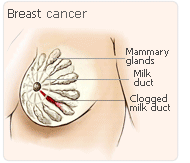
In case-control studies, induced abortion has long been linked to breast cancer risk. A full-term pregnancy in women before the age of 35 lessens the overall risk of breast cancer, possibly by quickening breast-cell differentiation. It's possible that a shortened pregnancy may not ensure sufficient differentiation to counteract elevated levels of pregnancy hormones that may advance proliferation. Such hormones include estrogen and progesterone. Yet, an incomplete pregnancy may not influence breast cancer risk at all and most epidemiologic reviews of spontaneous abortion (miscarriage) and breast cancer have not suggested a connection. The NHSII investigation outlined below examines relationships between lifestyle factors, reproductive factors, and the incidence of breast cancer.
In the NHSII investigation Hazard Ratios (HRs) were changed for age, menopause status (pre-menopause or post-menopause), age at menopause, and post-menopause hormones use, among other things. Russo and Russo found that cutting short pregnancy in rats stopped the protection against mammary tumorigenesis that pregnancy provides. They claimed that during the first trimester of pregnancy the differentiation procedure may not be enough to counteract the effects of raised levels of pregnancy hormones such as estrogen and progesterone that increase breast-cell division.

The NHSII study did not find a relationship between induced abortion and breast cancer incidence nor between miscarriage and breast cancer occurrence during a decade-long follow-up. What was important were links found in 2 subgroups; a link between induced abortion and PR- breast cancer and the opposite association between spontaneous abortion before the age of 20 and breast cancer incidence.
Among reviews in which induced abortions were examined separately from miscarriages, no relationship was found in around half, and in the other half a greater breast cancer risk was noted. No link was established for miscarriage in the majority of studies, including both cohort and case-control studies.
It is worth remembering that when discussing personal matters such as induced abortion underreporting is possible. Thus, general underreporting of induced abortion in a group study would most probably lead to underestimation of the true relationship.
Amongst NHSII females, 66% were still pre-menopause at the end of follow-up phase and so had not used postmenopause hormones, so their reproductive history may still have been incomplete.
Breast cancer cases were almost entirely premenopause; therefore, such findings may not be the same for postmenopausal women who have used hormones. Despite the fact that such data does not match any considerable overall relationship between induced abortion and breast cancer, a simple association cannot be ignored in subgroups defined by known breast cancer risk factors, timing of abortion, or parity.
It can not be concluded that, based on this primarily premenopause population, neither induced nor miscarriage were related to the incidence of breast cancer. Such findings support earlier evidence pointing out a lack of an important overall association between induced or spontaneous abortions and breast cancer risk. During pregnancy, increased levels of certain hormones, work to enhance breast-cell division. Such hormones include estrogen and progesterone. However, it remains unclear whether or not an incomplete pregnancy results in insufficient differentiation to counter the high levels of pregnancy hormones that may advance this disease.